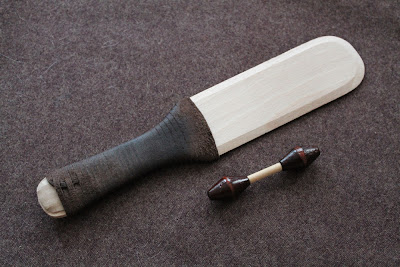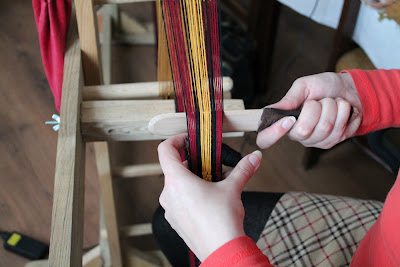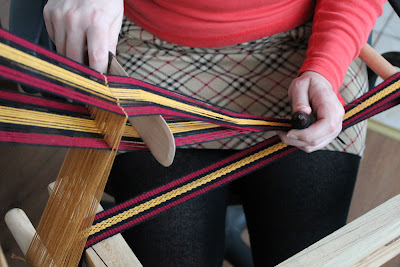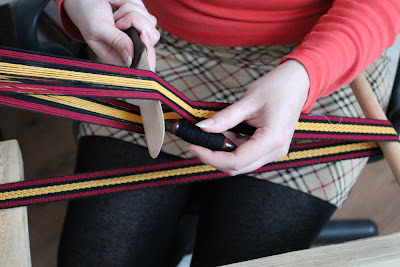Express weaving
I once came across this interesting video – a clever weaving technique on the inkle loom that allows for dizzying speed in the formation of the selvedge.
I decided to try it in my workshop. The small bidel was made from a wooden pancake spatula. In the improved version, the handle is wrapped in a strap, because the edges - although not sharp - were digging into my hands. I initially made the shuttle from 2 buttons and a piece of drinking straw. The second version is 2 wooden beads and a stick.
My warp is tilted – not horizontal, so I changed the position of my hands a little. I hold my left hand with the shuttle above the selvedge – both hands are more or less at the same level, which makes work more comfortable. Seweryn took photos of me weaving.
I pull the selvedge up and pass the shuttle through the isthmus from right to left.
Then I press the selvedge down…
…and I move the shuttle from left to right.
The initial exercises were slow – about 0.5 meters per hour. It came out crooked and the shuttle fell out of my hand. Later I managed to speed up and the speed record is about 2.2 meters per hour. Ultimately, the weaving speed is lower because I prefer to tighten the weave very tightly, and not just hmm… decently.
The technique will be very useful for weaving simple selvedges, especially those made of thin yarn. The selvedges that are pulled out will remain unchanged, because when selecting threads it is better to sit symmetrically and in front of the work.
I noticed that my arms and hands hurt a little during such work. But my spine is completely relieved. And that's a positive change, because my back and neck tend to hurt for a few days after work, and the pain in my hands disappears within an hour or so.
In the post Express selvedges I published photos of the effects of using the quick technique.




